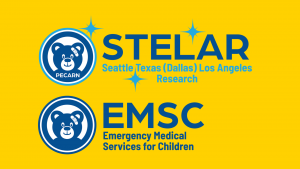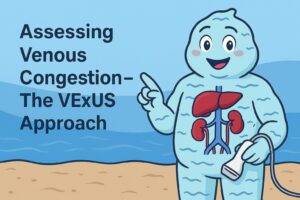Author: Joshua J. Oliver, MD (EM Attending Physician, San Antonio, TX) // Edited by Alex Koyfman, MD (@EMHighAK) and Brit Long, MD (@long_brit, EM Attending Physician, San Antonio, TX)
Welcome to EM@3AM, an emDocs series designed to foster your working knowledge by providing an expedited review of clinical basics. We’ll keep it short, while you keep that EM brain sharp.
A 20-year-old male college student arrives by ambulance restrained in a stretcher. Members of his fraternity called the police saying he became violent and “zombie-like” shortly after burning incense alone in his room. He is currently staring off into space making grunting noises and violently resists his restraints whenever someone touches him. He is hypertensive and tachycardic with a normal blood glucose.
What is the diagnosis, and what are your next steps?
Answer: Synthetic Cannabinoid (SC) Intoxication
Background:
- SCs were originally developed in the 1940s to aid in the research of therapeutic uses of cannabinoids. SCs bind the same receptors as delta-9-tetrahydrocanabinol (THC), the active component in marijuana. However, its effect is much more intense. Its active ingredients include cannabicyclohexanol, JWH-018, JWH-073, and HU-210.1
- Starting in the 1990s, SCs created in clandestine labs were legally marketed under names such as “spice” or “K2”. SCs quickly became popular because of their intense psychoactive effects.2 Since then many of these compounds have been labelled schedule 1 drugs.3 However, these drugs are easily modifiable, which makes regulating and screening for SCs very difficult.4
- It is usually smoked after a liquid compound of SC is sprayed onto commonplace organic matter, though it can also be ingested.4,5
- The many adverse outcomes associated with its use, along with its easy access, are creating a growing public health concern.5
Presentation:
SCs and the various adulterants it is mixed with or sprayed onto represent a diverse family of compounds. This leads to a wide range of presentations that do not fit nicely into any one toxidrome, though sympathomimetic toxidrome may be present.5,6 Some of the more common presentations and demographics include:
- Males in their 20s
- Poly drug use
- Mental status changes
- Panic attacks
- Memory distortion
- Acute psychosis
- Disorganized behavior
- Vertigo
- Suicidal and Homicidal thoughts
- Seizure
- Rhabdomyolysis
- Acute Kidney Injury
- Neurologic deficits (stroke)
- Chest pain7,8
Evaluation:
Given the ever growing number of variants, SC toxicity remains a clinical diagnosis. Although it is most commonly used by young men, SC toxicity is associated with acute coronary syndrome, new onset seizure, stroke, acute kidney injury, and rhabdomyolysis. Depending on the presentation the evaluation could include any of the following:
- Serum electrolytes
- Blood urea nitrogen and creatinine
- Creatine kinase
- Venous blood gas
- Serum lactate
- Blood alcohol level
- Complete blood count with platelets
- Urine dip stick (myoglobin)
- Urine drug screen (if concerned for co-exposure to other drugs)
- EKG
- Urine pregnancy test
- Head CT (seizures & altered mental status)9
Management:
Treatment of CB toxicity is primary focused on symptom management, supportive care, and consideration of possible ingestion of other more dangerous agents. However, some of the most common treatments these patients receive are benzodiazepines, cooling, and intravenous fluid rehydration to treat and prevent the combination of agitation or agitated delirium, hyperthermia, and rhabdomyolysis.6,8,9
For more, see http://www.emdocs.net/synthetic-cannabinoids/
References/Further Reading:
- Polissidis A, Chouliara O, Galanopoulos A, et al. Cannabinoids negatively modulate striatal glutamate and dopamine release and behavioural output of acute D-amphetamine. Behav Brain Res 2014; 270: 261–269.
- Pertwee RG. Receptors and channels targeted by synthetic cannabinoid receptor agonists and antagonists. Curr Med Chem 2010; 17: 1360–1381.
- US Drug Enforcement Administration. Schedules of controlled substances: temporary placement of four synthetic cannabinoids into schedule I. Final order. Fed Regist 2014; 79:7577–7582.
- Vandrey R, Dunn KE, Fry JA, et al. A survey study to characterize use of spice products (synthetic cannabinoids). Drug Alcohol Depend 2012; 120: 238–241.
- Gunderson EW, Haughey HM, Ait-Daoud N, et al. “Spice” and “K2” herbal highs: a case series and systematic review of the clinical effects and biopsychosocial implications of synthetic cannabinoid use in humans. Am J Addict 2012; 21: 320–326.
- Castaneto MS, Gorelick DA, Desrosiers NA, Hartman RL, Pirard S, Huestis MA. Synthetic Cannabinoids: Epidemiology, Pharmacodynamics, and Clinical Implications. Drug and Alcohol Dependency. 2014 Nov 1;144:12-41.
- Babi M, Robinson CP, Maciel CB. A spicy status: Synthetic cannabinoid (spice) use and new-onset refractory status epilepticus—A case report and review of the literature. SAGE Open Medical Case Reports. 2017; 5:1-5.
- Mills B, Yepes A, Nugent K. Synthetic Cannabinoids. American Journal of Medical Science. 2015 Jule;350(1):59-62.
- Wang GS. Synthetic Cannabinoids: Acute intoxication. Article last updated December 2017. Retrieved from: https://www.uptodate.com.








